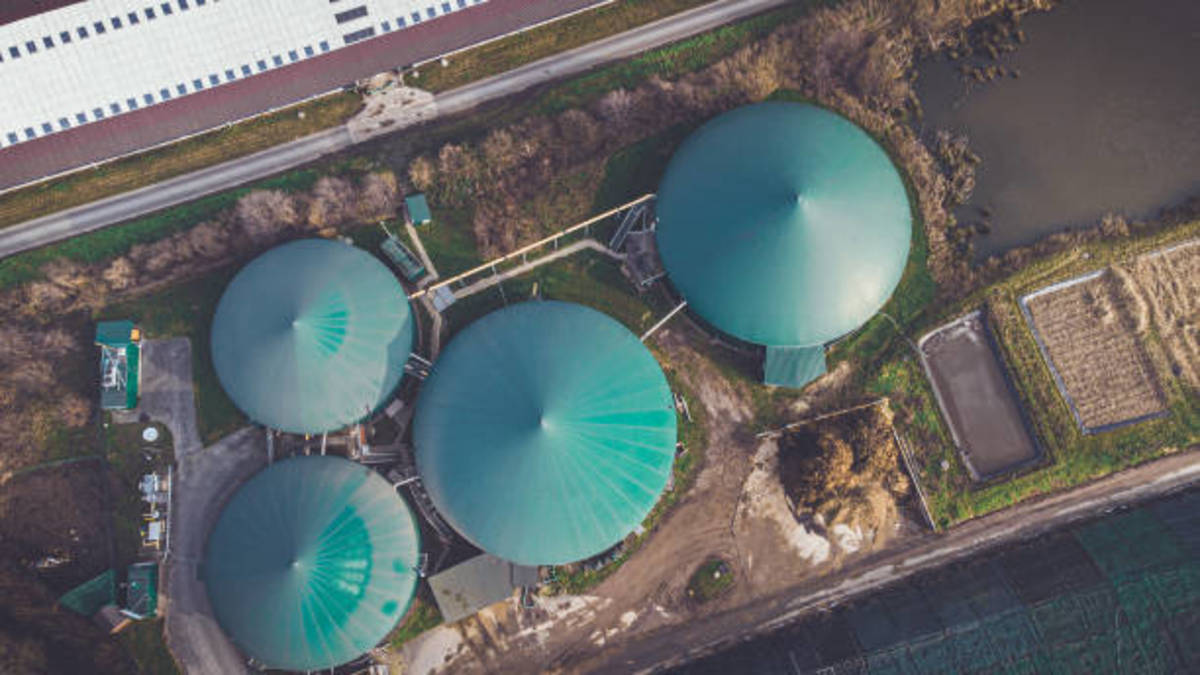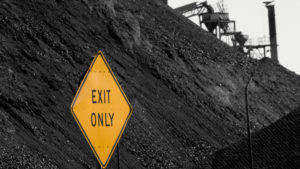Bioenergy could provide up to 20pc of our total energy by 2050 – and this company’s got a headstart

Aerial view of a biogas plant. Pic: Getty
By the start of the next decade, Australia’s bioenergy sector could reduce emissions by about 9pc, divert an extra 6pc of waste from landfill, and contribute around $10 billion to the nation’s GDP annually, according to the Australian Renewable Energy Agency’s (ARENA) Bioenergy Roadmap.
It lays out a vision for a sustainable bioenergy industry that can help increase fuel security, enhance waste recovery, and deliver economic benefits from now until 2050 by exploring potential future scenarios.
Bioenergy is a form of renewable energy generated from the conversion of biomass into heat, electricity, biogas, and liquid fuel.
The sector accounted for 47pc of Australia’s renewable energy production, as well as 3pc of its total energy consumption during 2019-2020, however its potential is significantly larger.
Modelling for the Bioenergy Roadmap shows that bioenergy has the potential to provide up to 20 per cent of Australia’s total energy consumption by the 2050s.
The only ASX-listed biomethane producer
As one of only 25 genuine green stocks listed on the ASX, and the only ASX listed biomethane producer, Delorean Corporation (ASX:DEL) executive director Hamish Jolly said ARENA’s announcement signals a big step towards making bioenergy a key part of Australia’s renewable energy puzzle.
The company is building two bioenergy developments in South Australia and New Zealand worth around $20 million and has reached an FID on its build-own-operate $13.8 million DEVO Project in Victoria, where construction is set for completion in FY2023.
“The sector has been waiting for this for quite some time,” he said.
“We’ve basically got a 10-year pathway to make bioenergy a significant part of Australia’s renewable story.
“The announcement focuses on market opportunities in the hard-to-abate sectors where it is difficult without specific activities to get to net zero on carbon such as renewable heat for industrial processes, aviation, and importantly for Delorean renewable gas,” he said.
“Potentially what they are saying is that there is a targeted development program by 2030 where bioenergy will provide up to 33 per cent of industrial heat, up to 23 per cent of the total pipeline gas market, and up to 8 per cent of the total utility-scale and small-scale electricity generation market.
“This is a massive market for us – the opportunity for biomethane, inside of the context of this roadmap is that hydrogen is currently out of the money and will be economically for some time.
“The only pathway to displacing fossil fuels currently is biomethane and we are rolling out the solutions for that.
“We can deliver biomethane now and will be delivering through our projects into the grid.”
First ‘green gas to mains’ milestone
Back in May, Delorean acquired the Salisbury Bioenergy Project which will process commercial and industrial organic food and agriculture waste to deliver 150TJ per annum of biomethane into the gas distribution network in Adelaide, South Australia.
Under and offtake agreement with Origin Energy/AGIG, the project is set to be the first to achieve this ‘green gas to mains’ milestone in Australia.
While there are plenty of ways to generate bioenergy, Delorean’s plants specialise in a process called anaerobic digestion. Anaerobic digestion is a process that breaks down organic matter and produces clean biogas suitable for energy.
“The substitute for biomethane beyond the product that we are producing from our anaerobic digestion plant is landfill gas – landfill gas can also deliver biomethane but as far as we are aware no one has done landfill gas into the gas mains like we are doing in Adelaide,” Jolly said.
A landmark collaboration agreement was reached between Delorean and AGIG back in September with both companies agreeing to work towards establishing a mutually acceptable business model to develop, construct, own and operate anaerobic digestion plants to supply biomethane into AGIG gas networks.
And more recently the company entered into a collaboration agreement with Brickworks Building Projects, which will see the two companies undertake a feasibility study to develop, build, and operate bioenergy facilities to convert organic waste to green gas and electricity.
The converted electricity will then be used in Brickworks Building Products beginning with its NSW brick manufacturing sites.
Funding to advance the sector through additional research
There hasn’t been a player prepared to take the lead in the bioenergy space until Delorean, Jolly said.
“And encouragingly for us, ARENA’s announcement talks a lot about strong partnerships between the public and private sector to get bioenergy deployed,” he said.
To support the implementation of the Bioenergy Roadmap, ARENA has also received $33.5 million in additional funding from the Government to advance Australia’s bioenergy sector through co-funding additional research, development and deployment of advanced sustainable aviation and marine biofuels.
Now it is up to the government to consider the 26-page report and inform the next series of investment and policy decisions by the private and public sectors.
At Stockhead, we tell it like it is. While Delorean is a Stockhead advertiser, it did not sponsor this article.
UNLOCK INSIGHTS
Discover the untold stories of emerging ASX stocks.
Daily news and expert analysis, it's free to subscribe.
By proceeding, you confirm you understand that we handle personal information in accordance with our Privacy Policy.








